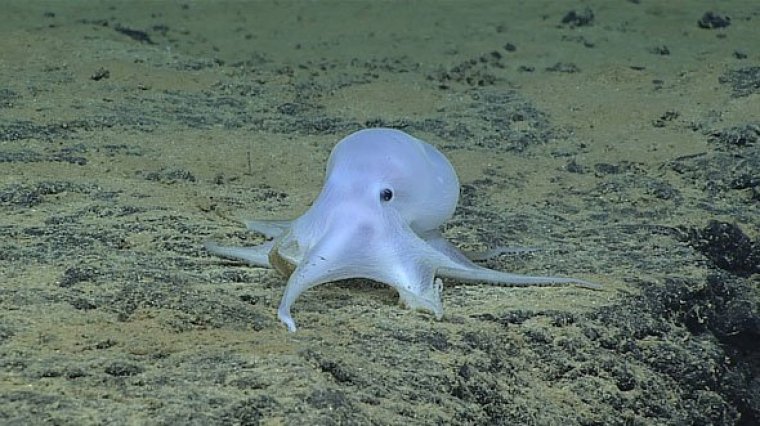| News / Science News |
Deep Discoverer Discovers a Very Deep, Ghostlike Octopod
NOAA | MARCH 16, 2016
The first operational dive of Okeanos Explorer’s 2016 season, on February 27, explored depths of over 4,000 meters northeast of Necker Island (Mokumanamana) in the Hawaiian Archipelago.

This ghostlike octopod is almost certainly an undescribed species. ![]()
The primary objective was to collect geological samples on the ridge in order to determine whether these have the same composition as samples that have previously been collected near Necker Island. Additionally, the remotely operated vehicle (ROV) Deep Discoverer surveyed biological communities in the area.
As the ROV was traversing a flat area of rock interspersed with sediment at 4,290 meters, it came across a remarkable little octopod sitting on a flat rock dusted with a light coat of sediment. The appearance of this animal was unlike any published records and was the deepest observation ever for this type of cephalopod.
A distinctive characteristic was that the suckers were in one, rather than two, series on each arm. This animal was particularly unusual because it lacked the pigment cells, called chromatophores, typical of most cephalopods, and it did not seem very muscular. This resulted in a ghostlike appearance, leading to a comment on social media that it should be called Casper, like the friendly cartoon ghost. It is almost certainly an undescribed species and may not belong to any described genus.
YOU MAY ALSO LIKE


